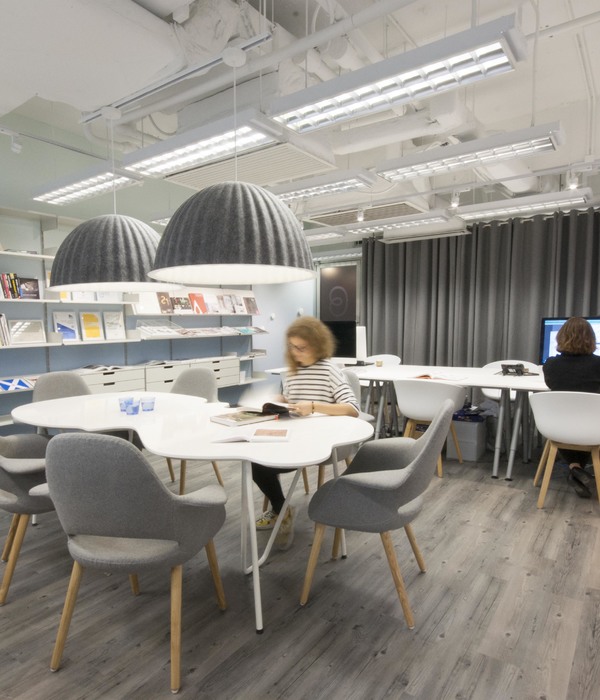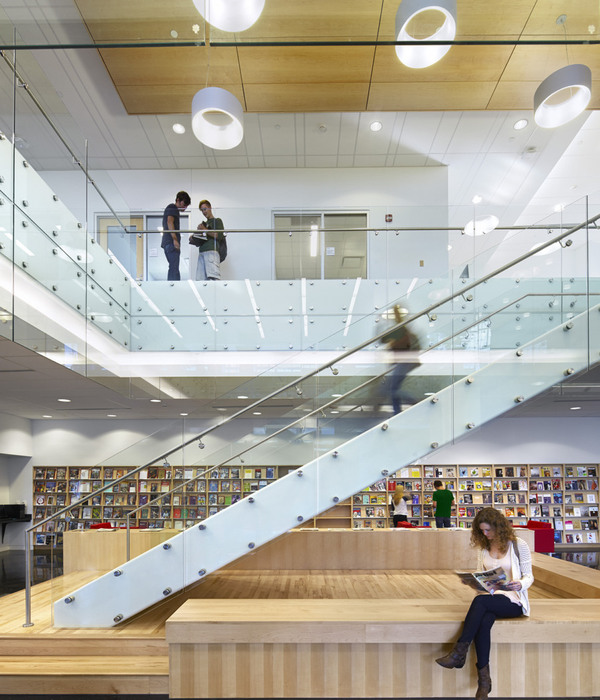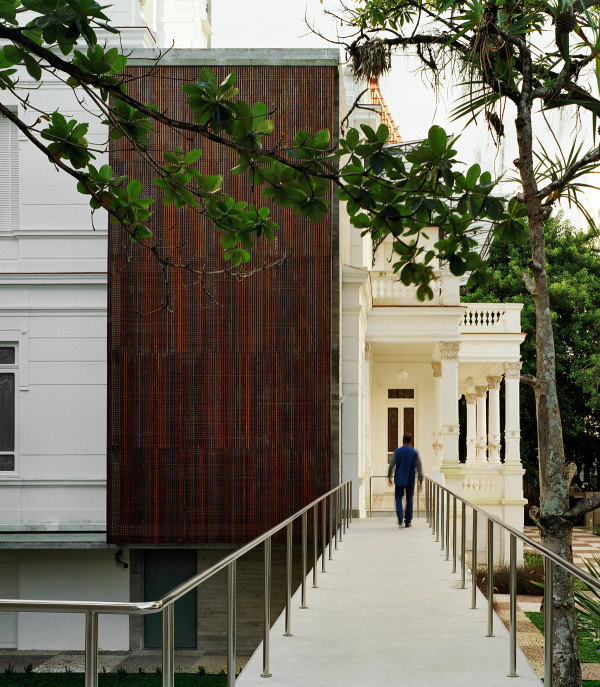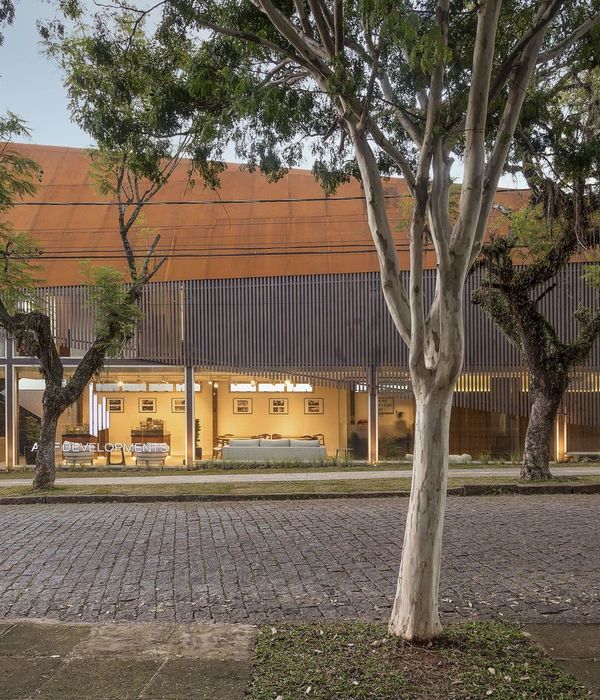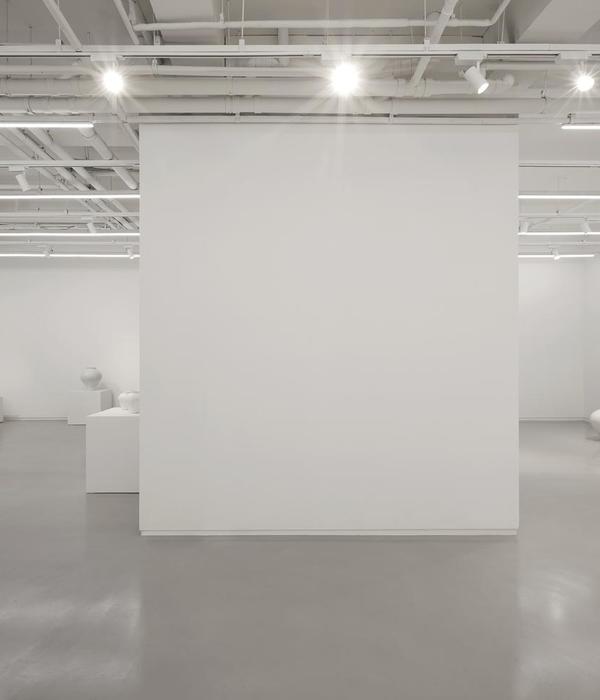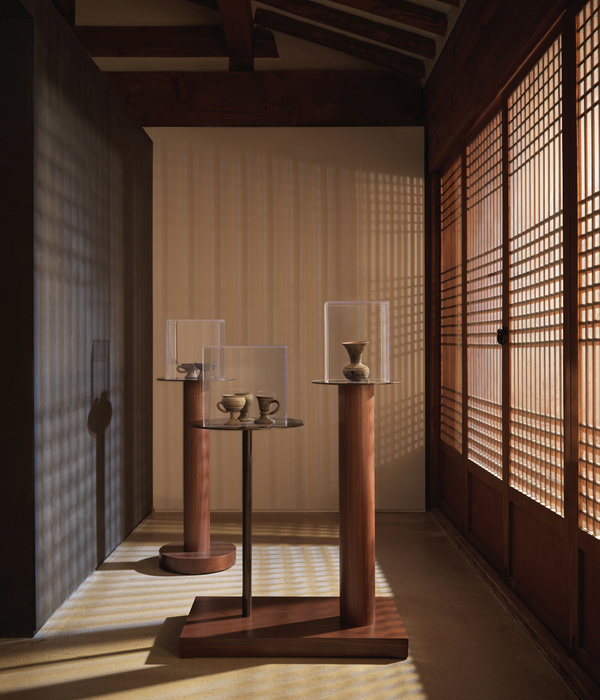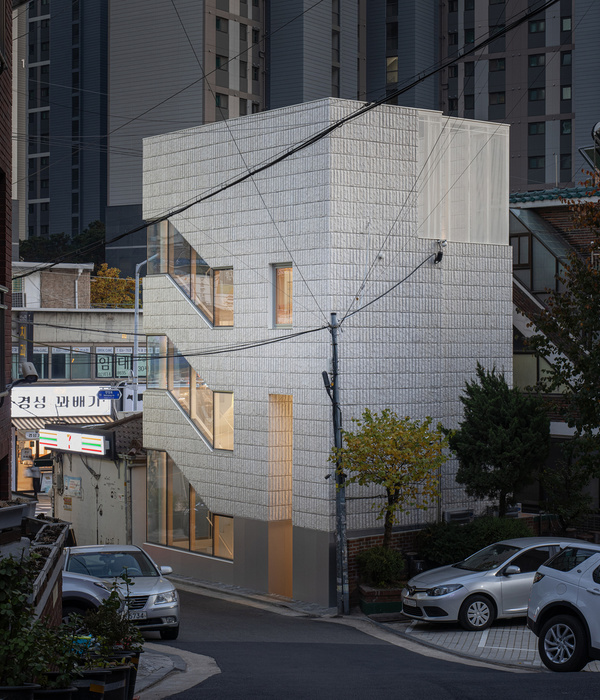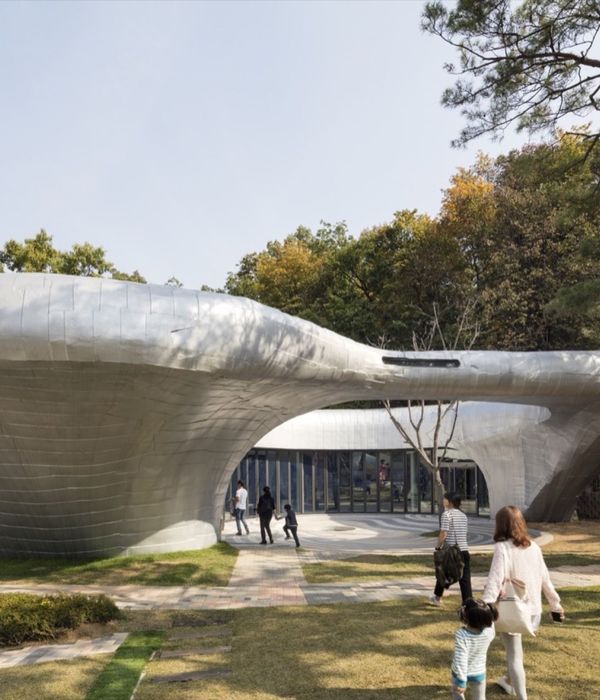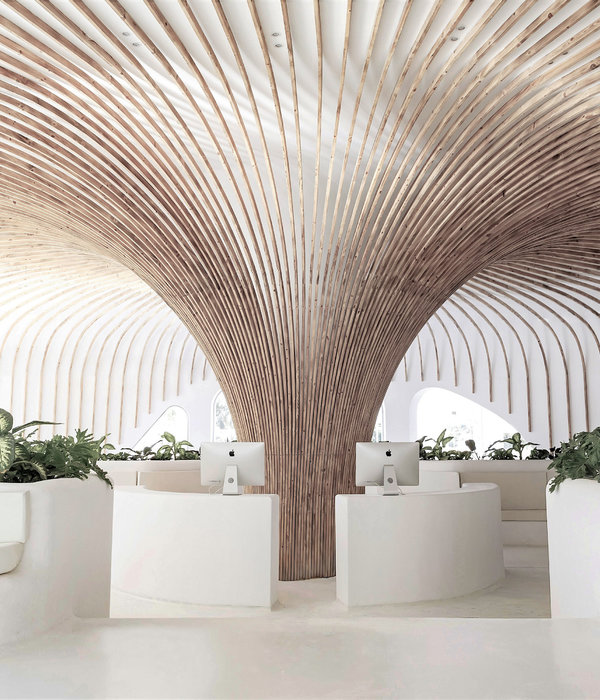querkraft architects
该博物馆自2013年起频繁获得多个奖项,是一座典范建筑,如今扩建了2500㎡,于2015年4月26日向公众开放。现存的展览空间,一个可见的存储区,一个放置绘画及雕塑作品的侧翼区,一个用于临时展览的160米长的大厅(2000㎡),一个平面造型艺术室(500㎡)和另一个著名金制展品室(350㎡),都通过新的、几乎大部分是位于地下的组成空间得以扩建。
Museum Liaunig by querkraft architects, a receiver of multiple awards and a class listed monument since 2013, was expanded by 2500 sq meters and will be opened to the public on the 26th of April, 2015. The existing exhibition spaces, a viewable storage area, a wing for paintings and sculptures, a 160m long hall for temporary display (2000 m2), a room for graphic art (500m2) and another room for the renowned gold collection (350m2), are being expanded by new, mostly underground situated components.
除了存储区和雕塑花园,在主入口区还增加了一个新的用于临时展览的空间。这个大型三角形房间以其雕刻状混凝土天花板和天窗,创造了一种光线和实体的精致氛围,从而使参观者留下深刻印象。
In addition to storage areas and the sculpture garden, a new space for temporary exhibitions has been added by the main entrance. The big, triangular room impresses the visitors with its sculpture-like concrete ceiling with skylights that generates an exquisite atmosphere of light and materiality.
一条长长的地下走廊将建于2012年的雕塑存储区域与博物馆的其他地方相连接。新建的用于展览玻璃制品和微型制品的地下室依附于金制展品间,通过一条长长的匝道可以进入。
A long, underground corridor connects the existing sculpture storage area built in 2012 with the rest of the museum. Attached to the gold collection room, the new underground rooms for glass and miniature collections have been added and made accessible through a long ramp.
“the goal, to develop potent, iconographical architecture that provides art with the necessary free space has with the expansion only been invigorated.” states Jakob Dunkl, the co-founder and partner of the Viennese architecture office querkraft.
博物馆扩建后,创造与外部环境的关系很重要,要提供给参观者一种与周围景色及建筑本身相关的参观体验。带着这一想法,挑选的天窗、长廊尽头的玻璃门以及三角形天井都是设计概念的重要组成部分。延长的画廊侧翼,是从外部来看唯一可见的建筑部分,建筑物两边两个平台外的风景加深了参观体验。博物馆的其他部分位于地下。一个整体紧缩性的建筑适应地形,具有戏剧性效果,以及动线架构的严谨概念。总而言之,这栋建筑是艺术和建筑间构建良好互动的典范。在这栋独立的建筑艺术作品里,体现了内容和表现方式的交替互补。
With the new measures it was important to create a relationship to the outside, providing the visitors with an experience related to the surrounding scenery as well as the building itself. With that in mind, the selective skylights, a glass gate on the end of the long corridor and the triangular atrium are an important part of the concept. The drawn-out gallery wing, the only part of the building visible from the outside, contributes greatly to the experience with the views of the landscape from its two terraces on each side of the structure. The rest of the museum is situated underground. An overall very compressed building orientates itself greatly on the terrain and despite its lengthiness amazes with the dramaturgy and the strict concept of its traffic pattern. All in all, this building is an example of a well-constructed interaction between art and architecture, where the contents and the representation alternately complement each other to be manifested in an individual work of art.
Photos ©
querkraft – Lisa Rastl, Vienna I
querkraft – Hertha Hurnaus, Vienna I
querkraft, Vienna I
Client: HL Museumsverwaltung GmbH, Dkm. Herbert Liaunig
Architects: querkraft architects,
Museum, 1st phase of building, 2008: 5000 sqm
Expansion, 2015: 2.500 sqm
About querkraft architects
Jakob Dunkl, Gerd Erhartt and Peter Sapp
The architecture office located in Vienna exists since 1998. Numerous projects have been realised nationally and internationally. By orders of well-known clients almost 100 projects have been realised since its foundation. Jakob Dunkl, Gerd Erhartt and Peter Sapp work with a team of about 35 employees. Regarding their philosophy ‚give people space‘ the architecture office is one of the most experienced and prestigious in residential construction in particular. Querkraft was awarded the state prize for “architecture and sustainability” by the Ministry of Life in 2013, for the project U31 (Vienna). Querkraft has also realised projects in the areas of office and special purpose property, like museums.
MORE :
querkraft architects
{{item.text_origin}}

